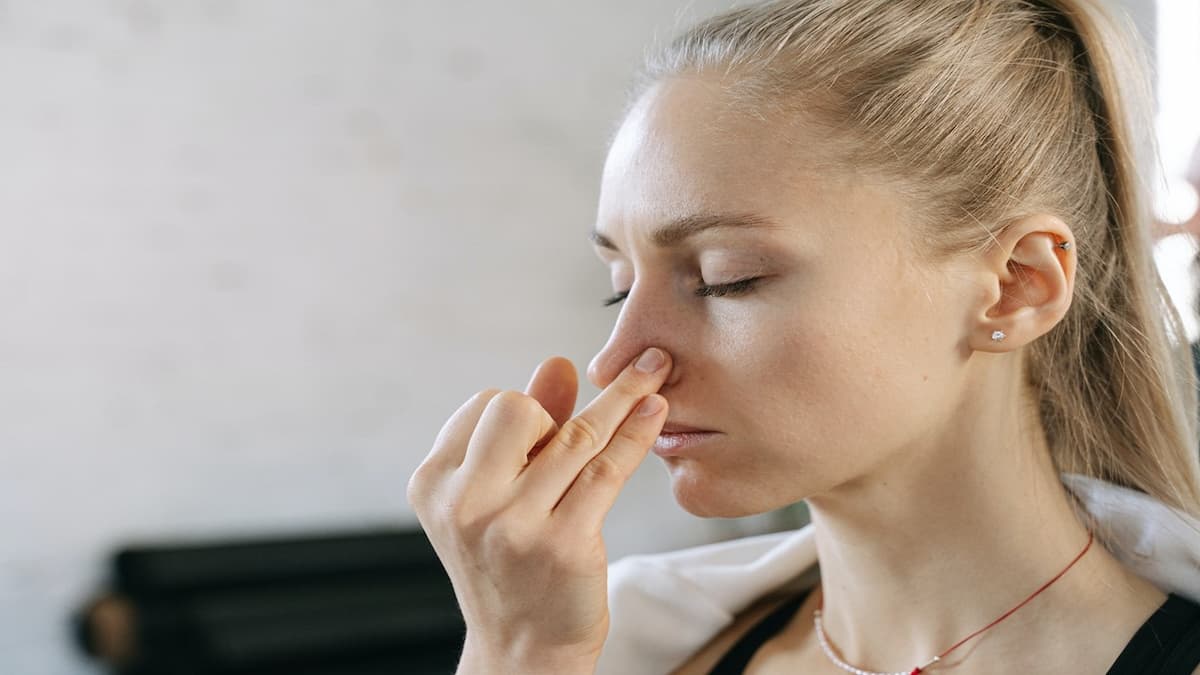Overview
Bhastrika Pranayama or Bellows Breath is one of the eight major types of Pranayama. It is similar to Kapalbhati Pranayama. Sitali and Sitkari are hypoventilating and relaxing, whereas Bhastrika and Kapabhati are hyperventilating and activating. Also, it increases the body temperature. One of the specific features of this pranayama is that breath retention is not in between inhalation and exhalation and follows only after many rounds of rapid inhalations and exhalations. Modern research shows that the normal negative symptoms of hyperventilation like dizziness don’t occur in Bellows Breathing and Kapalbhati. However, it is an advanced respiratory exercise and should always be practiced under expert guidance.
What is Bhastrika Pranayama or Bellows Breath?
The Sanskrit word Bhastra means bellows. Bellows are used by blacksmiths to pump fire. In this practice, the abdomen muscles work like bellows creating heat in the body and mind. It involves rapid and forceful inhalations and exhalations. The movement of the diaphragm imitates the bellows. Hence, it gets the name Bellows Breath.
In normal breathing, inhalation is spontaneous and exhalation is forceful. In Kapalbhati, inhalation is forceful and exhalation is spontaneous. But in Bhastrika-breath, both inhalation and exhalation are forceful.
Bhastrika Pranayama Steps
How to do Bhastrika Pranayama? The steps are given below.
- Sit in a meditation Posture.
- Close your eyes and relax your whole body by breathing slowly and gently.
- Then, breathe in and breathe out forcefully gradually increasing the speed in three phases. Both inhalation and exhalation should be forceful. Now it is a slow phase.
- After five rounds, repeat breathing at a moderate speed. This is the moderate phase.
- Repeat rapidly for up to 10 rounds. This is the fast phase. People with health conditions should start with five rounds of each phase and increase the number of rounds week after week.
- After the final phase, slow down your breath to normal for at least 15 rounds. Then, practice the Corpse Pose for five minutes.
- Advanced practitioners may go for Single Nostril Bhastrika, first with the left nostril and then with the right nostril. Perform an equal number of rounds on each nostril and repeat the same number of rounds with both nostrils open.
- After many days of practice, including breath retention. You can add breath retention with Nadi Shodhana at the end of the third phase.
Bhastrika Pranayama Benefits
This vitalizing pranayama promotes alveolar ventilation and ensures the blood flow to those areas of the lungs where blood flow is sluggish. Moreover, rapid and deep breathing improves the metabolic rate.
Also, rapid inhalations and exhalations vibrate to the entire circulating system and ensure efficient functioning,
This practice may be helpful to a person with chronic obstructive pulmonary disease. Yet he should practice this under expert guidance. A study conducted on 52 healthy individuals for 6 weeks conclude that the daily practice of Bhastrika Pranayama helps to keep lungs more efficient. (Baljinder S. Bal, et al., 2021).
It helps in triggering the Sympathetic Nervous System of the brain by improving the reaction time, divided attention, and working memory. It enhances the response rate and reduces the latency periods of the responses. (A. Banzal, B.Rawat, 2021).
It improves the breath-holding time significantly. (Dr. C. Durai and Athisiaraj, 2019). Hence, it facilitates the other Pranayama techniques.
Furthermore, it improves maximal oxygen uptake. Practicing this regularly for 10 minutes daily for 5 days a week can help in improving cardiorespiratory fitness. (Ayushee Shirodkar, et al., 2019).
Ancient yoga texts suggest the following benefits.
- It clears the nasal passages by removing phlegm.
- Also, it improves pranic vitality.
- It tones the nervous system and blood circulation.
- Moreover, it stimulates the liver, spleen, pancreas, and the organs of the abdomen.
- Also, it facilitates digestion and evacuation.
- Furthermore, it tones the muscles of the abdomen and diaphragm.
- According to Hatha Yoga Pradipika, it helps to activate Kundalini. Also, it breaks the three Granthis (psychic knots) that block the Kundalini from moving up.
Bhastrika Pranayama Side Effects and Precautions
The indiscriminate practice may exacerbate a condition. Hence, people with health conditions like heart disease should practice this under expert guidance. They should follow a gentle approach gradually increasing the practice time.
Also, one point to remember is that it stimulates the Sympathetic nervous system. As such, this pranayama should be followed by practices that stimulate the parasympathetic nervous system. For instance, Bhramari pranayama, child pose, and corpse pose are the best practices to follow. However, a slow pace of Bhastrika (respiratory rate 6/minute) results in enhanced activation of the parasympathetic nervous system. (Tapas Pramanik, et al., 2009).
If one performs this practice before bedtime, it will disturb sleep. The best time to practice is around sunrise. Also, one should avoid this practice after a meal.
Moreover, one should avoid or reduce the number of rounds of this practice during hot weather conditions.
Bottom Line
Agnisar Kriya and Swana Pranayama are the best preparatory techniques for this practice. Also, one must include this practice in the earlier part of the yoga session. It will make the practitioner alert and energetic so that it would be helpful for the whole session. Also, it would increase the time and capacity of breath retention of other breathing exercises. Including this practice in your daily yoga session not only helps to have good health but also enhances fitness for other practices.



